Interface ILcdIntersectionMatrixPattern
- Since:
- 10.0
- See Also:
-
Field Summary
FieldsModifier and TypeFieldDescriptionstatic final ILcdIntersectionMatrixPatternMatrix pattern checking the topological relationship contains.static final ILcdIntersectionMatrixPatternMatrix pattern checking the topological relationship coveredBy.static final ILcdIntersectionMatrixPatternMatrix pattern checking the topological relationship covers.static final ILcdIntersectionMatrixPatternMatrix pattern checking the topological relationship crosses.static final ILcdIntersectionMatrixPatternMatrix pattern checking the topological relationship disjoint.static final ILcdIntersectionMatrixPatternMatrix pattern checking the topological relationship equals.static final ILcdIntersectionMatrixPatternMatrix pattern checking the topological relationship intersects.static final ILcdIntersectionMatrixPatternMatrix pattern checking the topological relationship overlaps.static final ILcdIntersectionMatrixPatternMatrix pattern checking the topological relationship touches.static final ILcdIntersectionMatrixPatternMatrix pattern checking the topological relationship within. -
Method Summary
Modifier and TypeMethodDescriptionbooleanmatches(ILcdIntersectionMatrix aIntersectionMatrix) Checks whether the topological relationship defined by this matrix pattern holds for the given intersection matrix.
-
Field Details
-
DISJOINT
Matrix pattern checking the topological relationship disjoint. Two shapes are disjoint if they have no points in common. This relation is the negation of the
INTERSECTSrelation.
In terms of the DE-9IM matrix, this relation is true in case the intersection matrix matches one of the following patterns: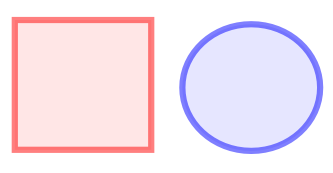
In the example in the image, the red and blue shape are disjoint. FF*FF****
-
INTERSECTS
Matrix pattern checking the topological relationship intersects. Two shapes intersect if they have at least one point in common. This relation is the negation of the
DISJOINTrelation.
In terms of the DE-9IM matrix, this relation is true in case the intersection matrix matches one of the following patterns: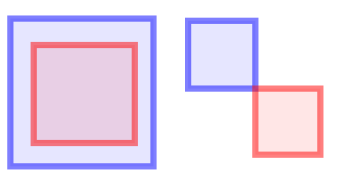
In the two examples in the image, the red and blue shapes intersect. T*********T**********T*********T****
-
CONTAINS
Matrix pattern checking the topological relationship contains. This relation is the inverse of the
WITHINrelation. The first shape contains the second shape if the following conditions are fulfilled:- their interiors intersect
- the exterior of the first shape does not intersect the interior nor the boundary of the second shape
Note that the first condition implies that a polygon does not contain its own contour (a closed polyline). This illustrates the subtle difference between the contains relation and the
COVERSrelation , since a polygon covers its own contour.
In terms of the DE-9IM matrix, this relation is true in case the intersection matrix matches one of the following patterns: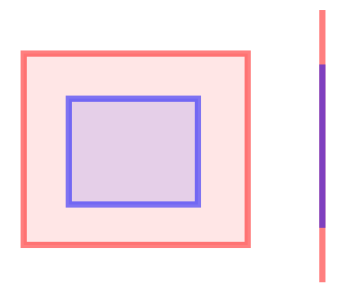
In the two examples in the image, the red shape contains the blue shape. T*****FF*
-
WITHIN
Matrix pattern checking the topological relationship within. This relation is the inverse of the
CONTAINSrelation. The first shape is within the second shape if the following conditions are fulfilled:- their interiors intersect
- the exterior of the second shape does not intersect the interior nor the boundary of the first shape
Note that the first condition implies that the contour of a polygon is not within the polygon. This illustrates the subtle difference between the within relation and the
COVERED_BYrelation, since the contour of a polygon is covered by the polygon.
In terms of the DE-9IM matrix, this relation is true in case the intersection matrix matches one of the following patterns:
In the two examples in the image, the red shape is within the blue shape. T*F**F***
-
COVERS
Matrix pattern checking the topological relationship covers. This relation is the inverse of the
COVERED_BYrelation. The first shape covers the second shape if the following conditions are fulfilled:- both shapes intersect
- the exterior of the first shape does not intersect the interior nor the boundary of the second shape
Note the subtle difference with the
CONTAINSrelation.
In terms of the DE-9IM matrix, this relation is true in case the intersection matrix matches one of the following patterns: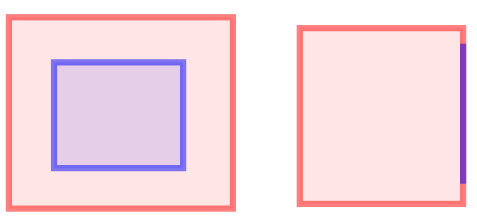
In the two examples in the image, the red shape covers the blue shape. T*****FF**T****FF****T**FF*****T*FF*
-
COVERED_BY
Matrix pattern checking the topological relationship coveredBy. This relation is the inverse of the
COVERSrelation. The first shape is covered by the second shape if the following conditions are fulfilled:- both shapes intersect
- the exterior of the second shape does not intersect the interior nor the boundary of the first shape
Note the subtle difference with the
WITHINrelation.
In terms of the DE-9IM matrix, this relation is true in case the intersection matrix matches one of the following patterns: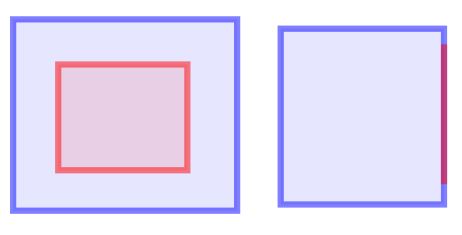
In the two examples in the image, the red shape is covered by the blue shape. T*F**F****TF**F*****FT*F*****F*TF***
-
TOUCHES
Matrix pattern checking the topological relationship touches. Two shapes touch each other if the following two conditions are fulfilled:
- their interiors have no point in common
- the boundary of one of the two shapes has at least one point in common with the other shape
In terms of the DE-9IM matrix, this relation is true in case the intersection matrix matches one of the following patterns: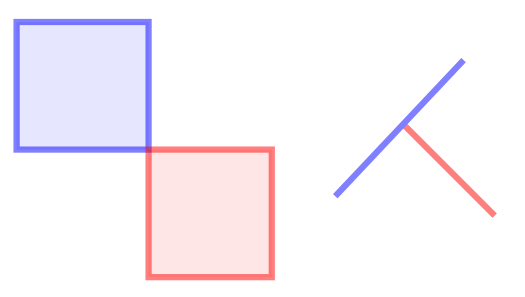
In the two examples in the image, the red and blue shapes touch. FT*******F**T*****F***T****
-
CROSSES
Matrix pattern checking the topological relationship crosses. Two shapes cross each other if the following three conditions are fulfilled:
- their interiors have at least one point in common
- the dimension of the intersection of their interiors is smaller than the dimension of the interior of the shape with the highest dimension
- neither shape lies completely inside the other shape
In practice, this means that:
- Two 1-dimensional shapes (such as polylines) cross if the intersection of their interiors has dimension 0.
- A 1-dimensional shape crosses a 2-dimensional shape if the interior of the 1-dimensional shape intersects both the interior and exterior of the 2-dimensional shape.
- A 0-dimensional shape (such as a point) never crosses another shape.
- Two 2-dimensional shapes never cross each other.
In terms of the DE-9IM matrix, this relation is true in case the intersection matrix matches one of the following patterns: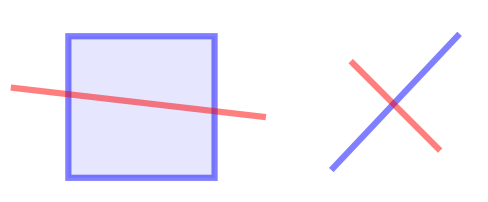
In the two examples in the image, the red and blue shapes cross. 0********for two 1-dimensional shapesT*T******for a 1-dimensional and a 2-dimensional shapeT*****T**for a 2-dimensional and a 1-dimensional shape
-
OVERLAPS
Matrix pattern checking the topological relationship overlaps. Two shapes overlap if the following conditions are fulfilled:
- their dimension is the same
- the intersection of their interiors has the same dimension as the shapes
- neither shape lies completely inside the other shape
This means that the overlap relation is always false for a:
- 0-dimensional shape (such as a point) and any other shape
- 1-dimensional shape and a 2-dimensional shape
In terms of the DE-9IM matrix, this relation is true in case the intersection matrix matches one of the following patterns: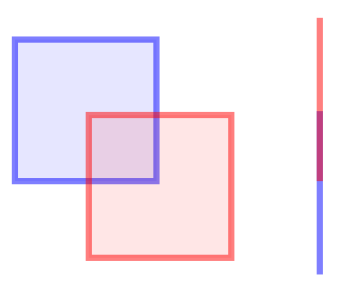
In the two examples in the image, the red and blue shapes overlap. 1*T***T**for two 1-dimensional shapesT*T***T**for two 2-dimensional shapes
-
EQUALS
Matrix pattern checking the topological relationship equals. The equals relation is true for two shapes which have the same interior, boundary, and exterior.
In terms of the DE-9IM matrix, this relation is true in case the intersection matrix matches one of the following patterns: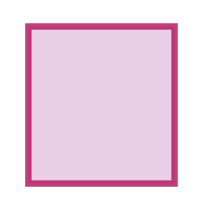
In the example in the image, the red and blue shape are equal. T*F**FFF*
-
-
Method Details
-
matches
Checks whether the topological relationship defined by this matrix pattern holds for the given intersection matrix.- Parameters:
aIntersectionMatrix- the intersection matrix- Returns:
trueif the binary topology relation defined by this matrix pattern holds foraIntersectionMatrix, false otherwise.
-